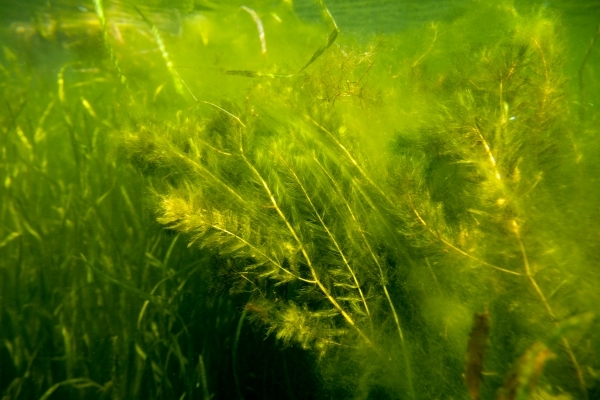WESTMINSTER — Get ready, get set, and go: that is the usual refrain as river users are off at the start of river season on Memorial Day!
The Connecticut River Valley Chapter of Trout Unlimited would modify that refrain.
Get ready, get set, and pause to think that it is up to you to protect the Connecticut River and its tributaries from invasions of exotic plants and animals.
And that means whether you use a powerboat, row, canoe, kayak, float, wade, swim, dive, fish, or sail, all river enthusiasts have a personal responsibility to protect the river and its tributaries.
* * *
There are no fixes once exotics establish themselves in a new habitat. If these invaders find their new surroundings welcoming, their numbers explode because they do not face predators that usually control their numbers.
And then, unfortunately - in some cases, along with no predator control - the waterway has high levels of nutrients because of pollution sources giving the runaway species more nourishment.
What follows are uncontrolled explosions of plant life that deny native species their usual habitat. These plants also create problems for humans: Just ask anyone living on a lake where Eurasian milfoil or water chestnut has taken hold, or someone whose beach was closed because of an unnaturally large burst of cyanobacteria feed by nutrient loading.
At best, any fix is expensive - and/or, as we are finding out with Lake Bomoseen, controversial.
* * *
The list of invasives we face continues to grow.
Lake Champlain is now dealing with the spiny water flea, a small critter that multiplies in profusion and, although fish do eat them, they cannot digest them.
Vermont is negotiating with New York to halt the invasion of the invasive round goby fish that has wreaked havoc in the Great Lakes and spread across New York in the state canal system. That species is heading toward Lake Champlain.
The Connecticut River has not yet seen these pests, but all it would take is a clump of them attached to an uncleaned fishing line or a live well contaminated with them to start their invasion of our river. Lake Champlain is just not that far away.
This brief discussion does not even address the other aquatic invasive species, including Phragmites, Eurasian milfoil, water chestnut, Chinese mystery snail, rusty crayfish, curly leaf pondweed, carp, or the freshwater jellyfish, all in or near our watershed. Care in preventing further spread of these infestations is our only useful tool.
* * *
All river enthusiasts should act as though every body of water harbors problem species. Rely on the precautionary principle - be safe, not sorry - and with that said, it is not hard to protect the river. Just check, clean, or dry!
• Check: At the ramp during trailering, thoroughly inspect your boat's hull, drive unit, trim plates, trolling plates, prop guards, transducers, anchor and anchor rope, and trailer. Scrape off and properly dispose of any suspected mussels and all waterweeds hanging from boat or trailer.
• Clean: Before launching your boat, assume that some exotic was in the last body of water you were in and that you are carrying it. You should thoroughly flush the hull, drive unit, live wells, any pumping system, bilge, trailer, bait buckets, and engine-cooling water system.
Drain all bilge water, live wells, bait buckets and any other water from your boat and equipment at the ramp as you leave a water body. One quick way to clean the exterior of a boat is the guide's trick of using a hot hard spray at a do-it-yourself carwash.
• Dry: If you cannot clean your water toys or tools, boats and trailers, personal flotation devices, fishing waders, water shoes and boots, and other items, dry them thoroughly in the sun for up to five days before using them in another water body.
Hot water pumped through an engine's intake is one method of preventing zebra mussel growth inside an engine's cooling system.
Do not use chlorine bleach or other damaging washing solutions in the water or next to the shore. If you are not sure that your water toy is clear of invasives, you should dry it.
Both Vermont and New Hampshire have recently increased boater responsibilities to prevent moving invasives among water bodies, including enforcement provisions for boat owners. If you transport a plant - exotic or not - to a water body different from its origin, you will be liable for a fine.
We at Trout Unlimited hope that all of those who play on, in, or under the river or its tributaries will take personal responsibility to protect our rivers from further invasions by aquatic exotics. You enjoy it, so protect it for yourself and others.
And remember: Check, clean, or dry!
